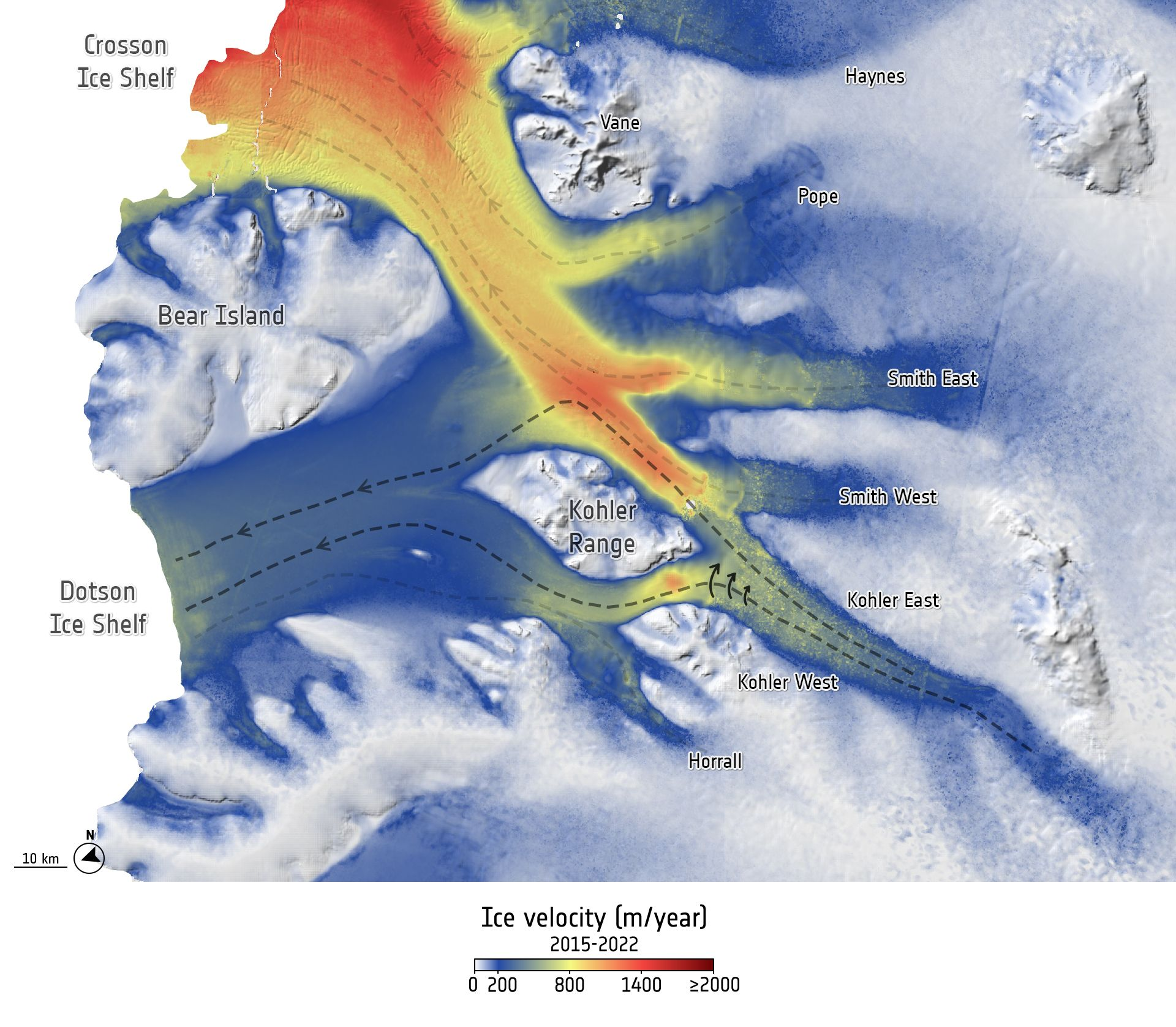A fast-moving Antarctic glacier has been observed by satellites to be stealing ice from a neighbor. Glaciologists were aware this could occur, but thought it took centuries or millennia. Instead, they have spotted the process taking place in just 18 years. As well as being a likely consequence of global heating, the event offers an opportunity to improve our understanding of the processes by which ice moves, and therefore improve modelling projections.
A team led by Dr Heather L Selley of the University of Leeds investigated the speed with which seven streams of ice in West Antarctica are flowing to Dotson and Crosson Ice shelves extending into the Amundsen Sea. More importantly, they wanted to know how that rate changed between 2005 and 2022. Glaciers flow at different speeds as a result of many factors, such as the slope of the rock beneath, but an acceleration in that flow would be bad news for coastal communities worldwide.
Disturbingly, but predictably, the glaciers sped up by an average of 51 percent. Consequently, six of the seven were moving by more than 700 meters (2,100 Feet) a year on average at the end. That might be slow even to a tortoise, but we know what happens when the tortoise doesn’t stop; for a river of solid ice, this is disturbingly fast.
However, one observation was less expected. The Kohler West Ice stream actually slowed down, while those around it were speeding up. Grateful as we might be for this break in the gloom, the observation needed investigating, and the fact that the greatest acceleration was in the glaciers on either side of Kohler West seemed relevant.
“We think that the observed slowdown on Kohler West Glacier is due to the redirection of ice flow towards its neighbor – Kohler East. This is due to the large change in Kohler West’s surface slope, likely caused by the vastly different thinning rates on its neighboring glaciers,” Selley said in a statement.
“Because Kohler East’s ice stream is flowing and thinning faster as it travels, it absorbs, or ‘steals’ ice from Kohler West,” Selley said. “This is effectively an act of ‘ice piracy’, where ice flow is redirected from one glacier to another, and the accelerating glacier is essentially ‘thieving’ ice from its slowing neighbour.” The piracy has even affected the boundary between the two ice shelves, as Kohler East is one of five glaciers feeding Crosson, while Kohler West flows to Dotson.

The Kohler Range splits the sibling glaciers, with one speeding up and the other slowing down.
Image Credit: ESA (Data source: Selley et al., 2025, University of Leeds)
The authors think Kohler West’s relatively steady pace is a consequence of the bedrock it sits on sloping in the opposite direction to the other glacier beds. The ice is nevertheless thinning like its neighbors.
Satellites can’t measure the movement of the ice directly, but it’s possible to spot features like crevasses with the Sentinel-1a and -1b satellites and observe their motion over time. The rate of movement was measured at the grounding line, where a tongue of ice begins to float, rather than resting on bedrock. Meanwhile, the European Space Agency’s CryoSat satellite can measure the thickness of the ice directly.
Co-author Dr Pierre Dutrieux of the British Antarctic Society attributed the piracy to faster melting where the ice meets the ocean, with the thinning this has triggered causing ice upstream to join one glacier rather than another.
“We didn’t know ice streams could ‘steal’ ice from each over such a short period, so this is a fascinating discovery,” Shelley said.
These glaciers are smaller than their neighbor, the Thwaites Glacier, dubbed the Doomsday Glacier for its potential to drown the homes of millions.
The authors say the discovery will need to be incorporated into models of Antarctic melting, but at this stage are not estimating how much difference it will make.
The Kohler East glacier lies in Marie Byrd Land, the one part of Antarctica not assigned to a country under existing treaties. Consequently, even if it were possible to prosecute a river of ice for theft, the jurisdiction would be uncertain, as in all the best piracy cases.
The study is open access in The Cryosphere.
Source Link: Antarctic Glacier Has Been Spotted Committing “Ice Piracy” On Its Neighbor